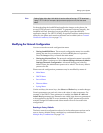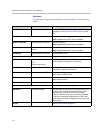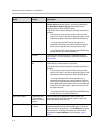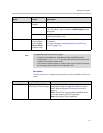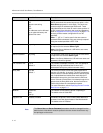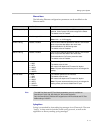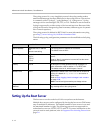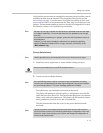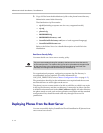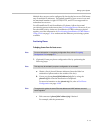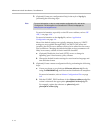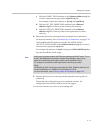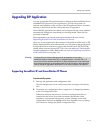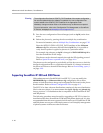
Setting up Your System
3 - 13
All of the boot servers must be reachable by the same protocol and the content
available on them must be identical. The parameters described in section
Server Menu on page 3-9 can be used to configure the number of times each
server will be tried for a file transfer and also how long to wait between each
attempt. The maximum number of servers to be tried is configurable. For more
information, contact your Certified Polycom Reseller.
To set up the boot server:
1. Install boot server application or locate suitable existing server(s).
2. Create account and home directory.
Each phone may open multiple connections to the server.
The phone will attempt to upload log files, a configuration override file,
and a directory file to the server. This requires that the phone’s account has
delete, write, and read permissions. The phone will still function without
these permissions, but will not be able to upload files.
The files downloaded from the server by the phone should be made
read-only.
Note
Be aware of how logs, overrides and directories are uploaded to servers that maps
to multiple IP addresses. The server that these files are uploaded to may change
over time.
If you want to use redundancy for uploads, synchronize the files between servers in
the background.
However, you may want to disable the redundancy for uploads by specifying
specific IP addresses instead of URLs for logs, overrides, and directory in the
<MAC-address>.cfg .
Note
Use this procedure as a recommendation if this is your first boot server setup.
Polycom recommends that you use RFC-compliant servers.
Note
If the provisioning protocol requires an account name and password, the server
account name and password must match those configured in the phones. Defaults
are: provisioning protocol: FTP, name: PlcmSpIp, password: PlcmSpIp.
Note
Typically all phones are configured with the same server account, but the server
account provides a means of conveniently partitioning the configuration. Give each
account an unique home directory on the server and change the configuration on
an account-by-account basis.



